Ukraine advances on Lyman while discontent with mobilization rises in Russia, says ISW
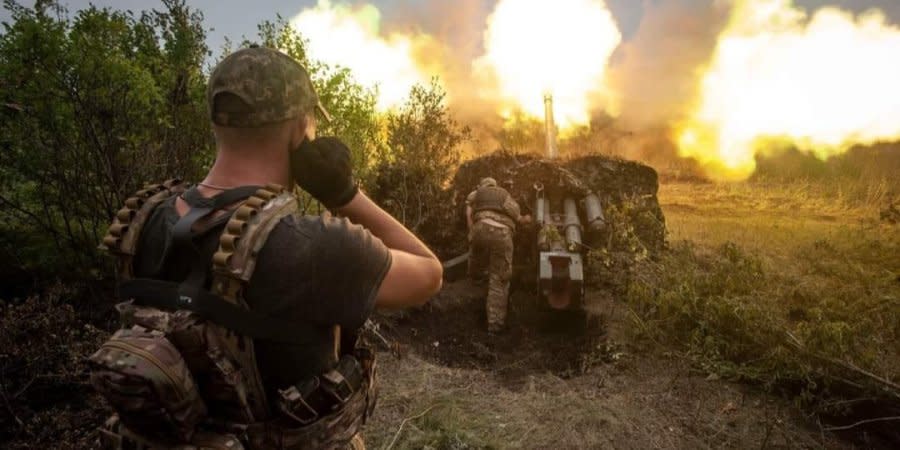
- Oops!Something went wrong.Please try again later.
Read also: Videos show Russians sent to war in Ukraine under Russian mobilization
The first days of mobilization in Russia have demonstrated this “despotic” approach, ISW analysts say, as recruiters immediately began to openly violate the parameters set by Russian dictator Vladimir Putin and Russian Defense Minister Sergei Shoigu. As a result, Russian citizens are being forcibly conscripted with no regard to pretext, prior military service, or other purported mobilization standards. Anti-mobilization protest participants have likewise been conscripted, the ISW reports, which is likely to exacerbate internal dissatisfaction in Russia, ISW experts predict.
They added that the Kremlin is likely to "disproportionately" mobilize representatives of non-Russian peoples and ethnic groups, as well as immigrant communities. Ideas are already being voiced in Moscow to introduce compulsory military service for immigrants from Central Asia who have acquired Russian citizenship over the past decade, under the threat of being stripped of their citizenship. And local officials are likely to be forced to mobilize men regardless of their military status. Some subjects of Russia, such as the Republic of Sakha (Yakutia) and the Kursk region, are already introducing regulations prohibiting reservists (Russian citizens with prior military experience) from leaving their places of permanent residence.
ISW notes that the first signs of public anger across Russia in response to these actions have already manifested, going by data from Independent Russian human rights outlet, OVD-Info — which have documents protests in 42 cities in the country, as well as cases of arson of military enlistment offices and local government buildings (in Nizhny Novgorod, St. Petersburg, Tolyatti and the Trans-Baikal Territory).
“The Kremlin is likely to quell such protests in the coming days,” ISW analysts write.
Read also: Losses of invading Russian troops now exceed 55,000, Ukraine says
“However, […] blatant disregard for even the parameters of mobilization dictated by the authorities may contribute to the alienation of those sections of the Russian public that were previously more tolerant of the Russian invasion of Ukraine when it concerned them less personally.”
The ISW also states that the Kremlin may have tried to downplay the prisoner swap with Ukraine by doing it on the same day Putin announced a partial mobilization, in order to smooth over criticism of the extradition of the Kremlin prisoners to Ukraine. The exchange turned out to be an "extremely unpopular" move among Russian nationalists and military bloggers.
Representatives of the Russian far-right criticized the exchange and appealed to the Kremlin with questions about whether Moscow has abandoned the “denazification” of Ukraine, one of the stated goals of the Russian invasion. After all, previously, Kremlin propagandists had widely covered the planned trial of the Azov regiment fighters.
Other conclusions made by the ISW analysts over the past day:
IAEA negotiations around the Zaporizhzhia Nuclear Power Plant are unlikely to significantly improve the situation at the plant and may provide an opportunity for Russian forces to stage provocations.
·Ukrainian forces likely continued limited counteroffensive operations along the Kharkiv-Luhansk Oblast border on September 22.
·The Armed Forces of Ukraine are likely to continue their offensive on Lyman (Donetsk Oblast): On September 22, several Russian sources reported fighting northwest of Lyman and claimed that Ukrainian troops had broken through Russian defenses in Redkodub and Karpovka, 20km north of Lyman. Russian sources also said that Ukrainian forces have made a breakthrough near the village of Koroviy Yar (22 km northwest of Lyman) and continue attacks in Drobysheve (west of Lyman).
·Ukrainian military officials maintained their operational silence regarding Ukrainian ground attacks in Kherson Oblast on September 22 and reiterated that Ukrainian forces are conducting an operational-level interdiction campaign in Kherson Oblast.
·Russian forces conducted limited ground attacks along the frontlines in Donetsk Oblast on September 22.
·Russian occupation forces are hurriedly setting conditions to hold sham annexation referenda across occupied Ukraine from September 23-27.
·Russian officials created polling stations in parts of Russia, ostensibly to enable displaced (in many cases meaning kidnapped) Ukrainian residents of occupied territories to “vote.”
·Russian occupation officials in Ukraine likely expect to be forced to provide personnel to meet Russian regional mobilization quotas after the Kremlin illegally annexes occupied Ukrainian territories.
Map of hostilities
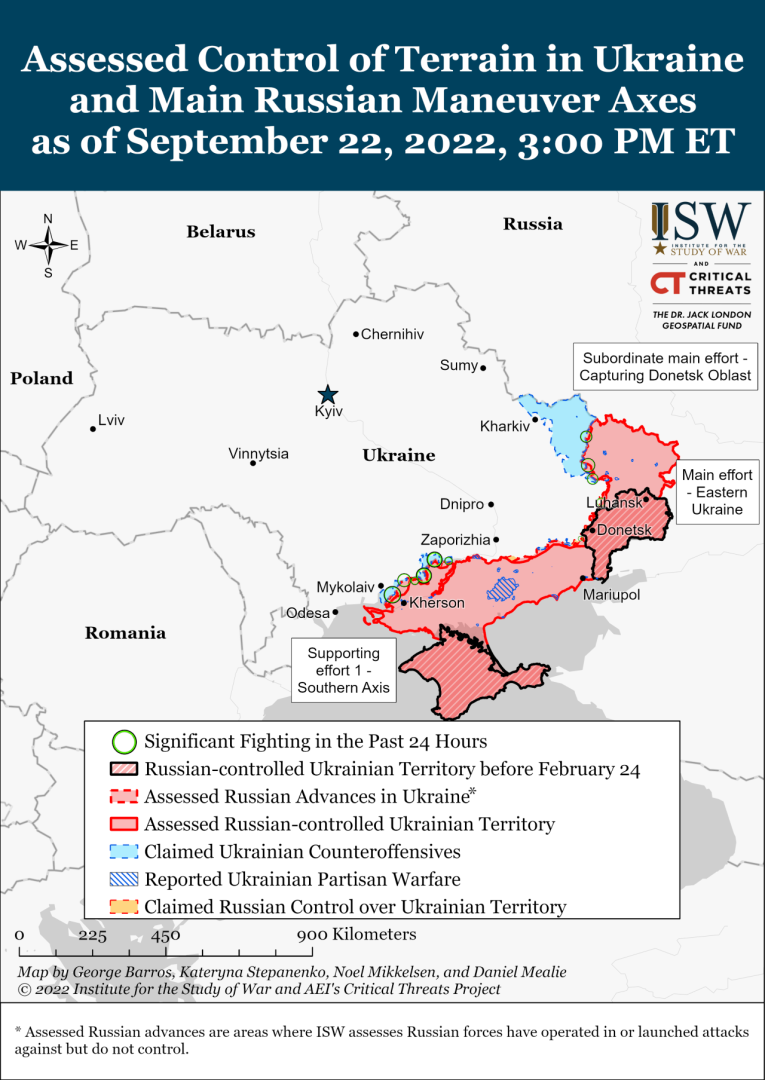
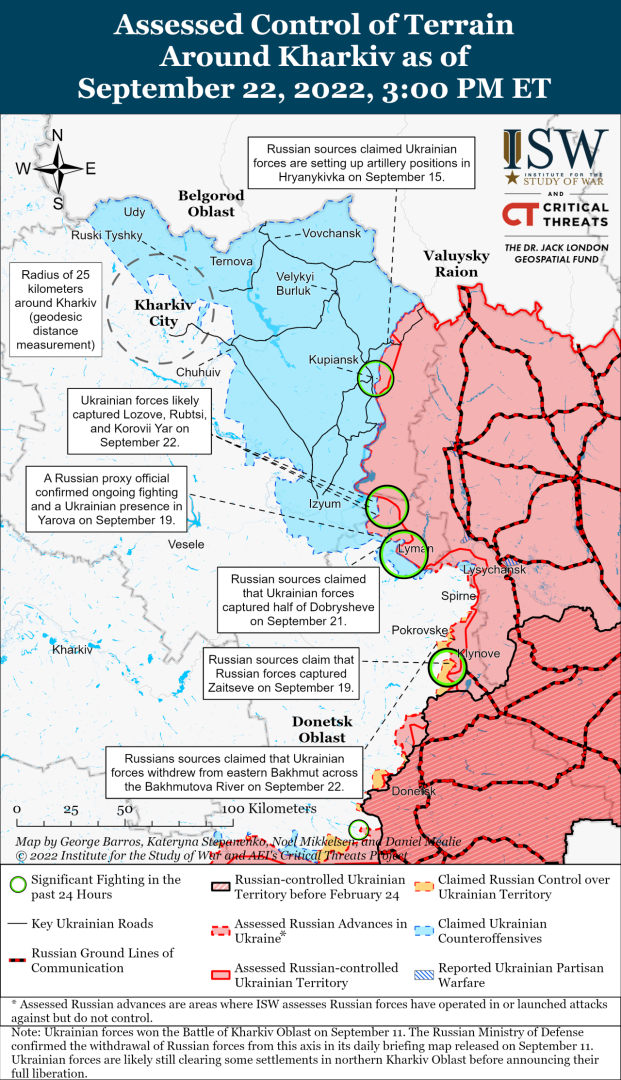
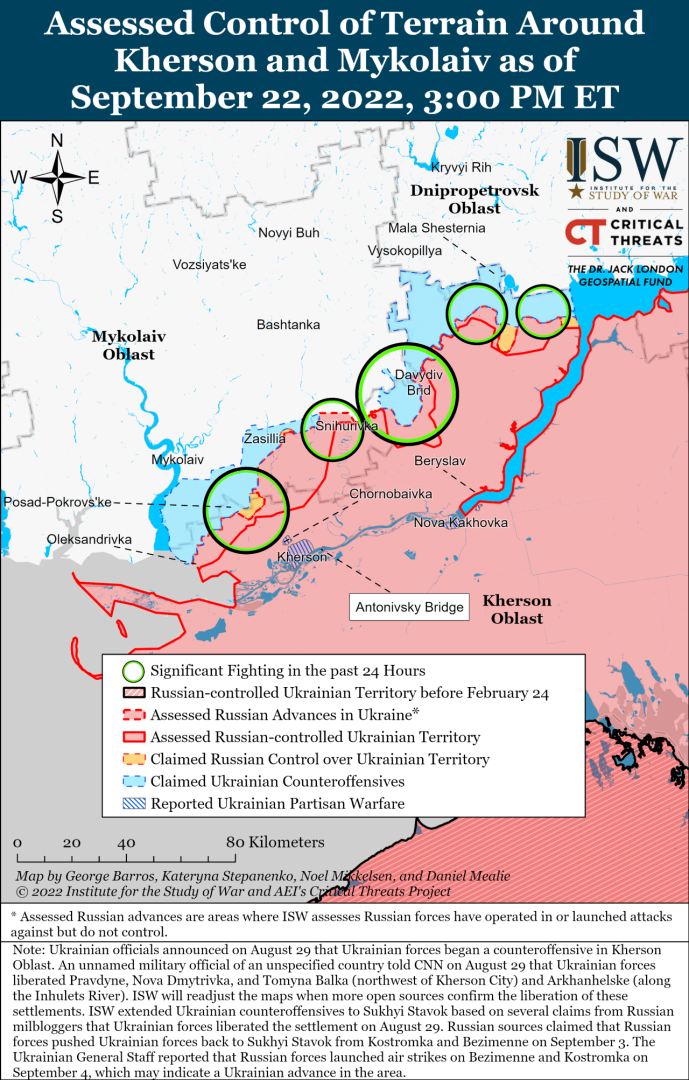
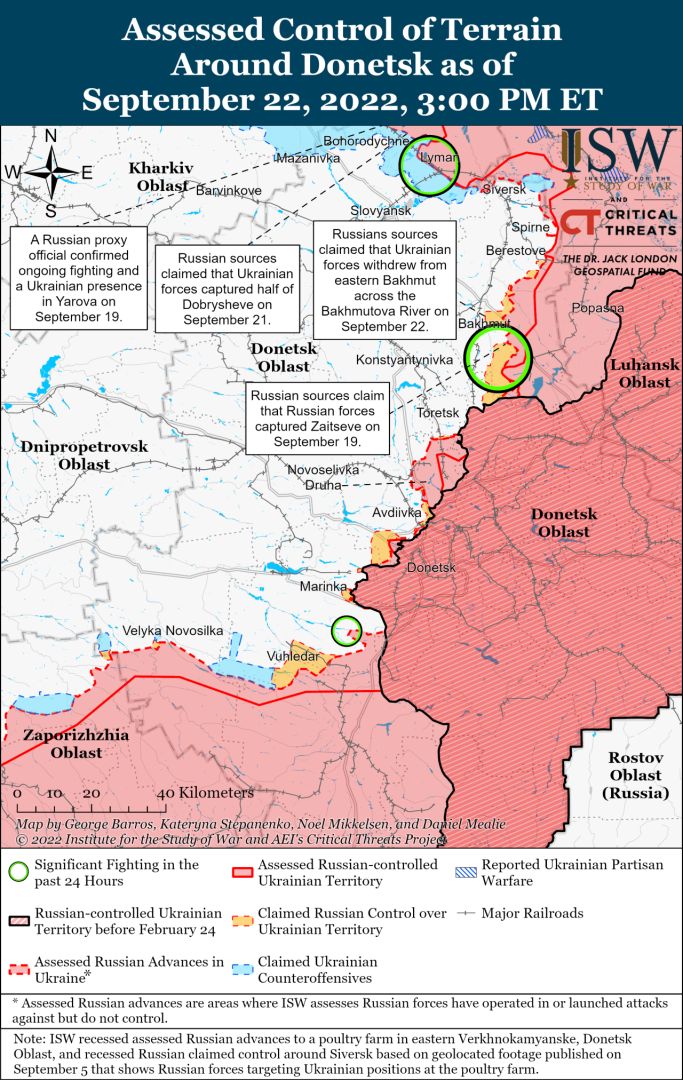
Read the original article on The New Voice of Ukraine

